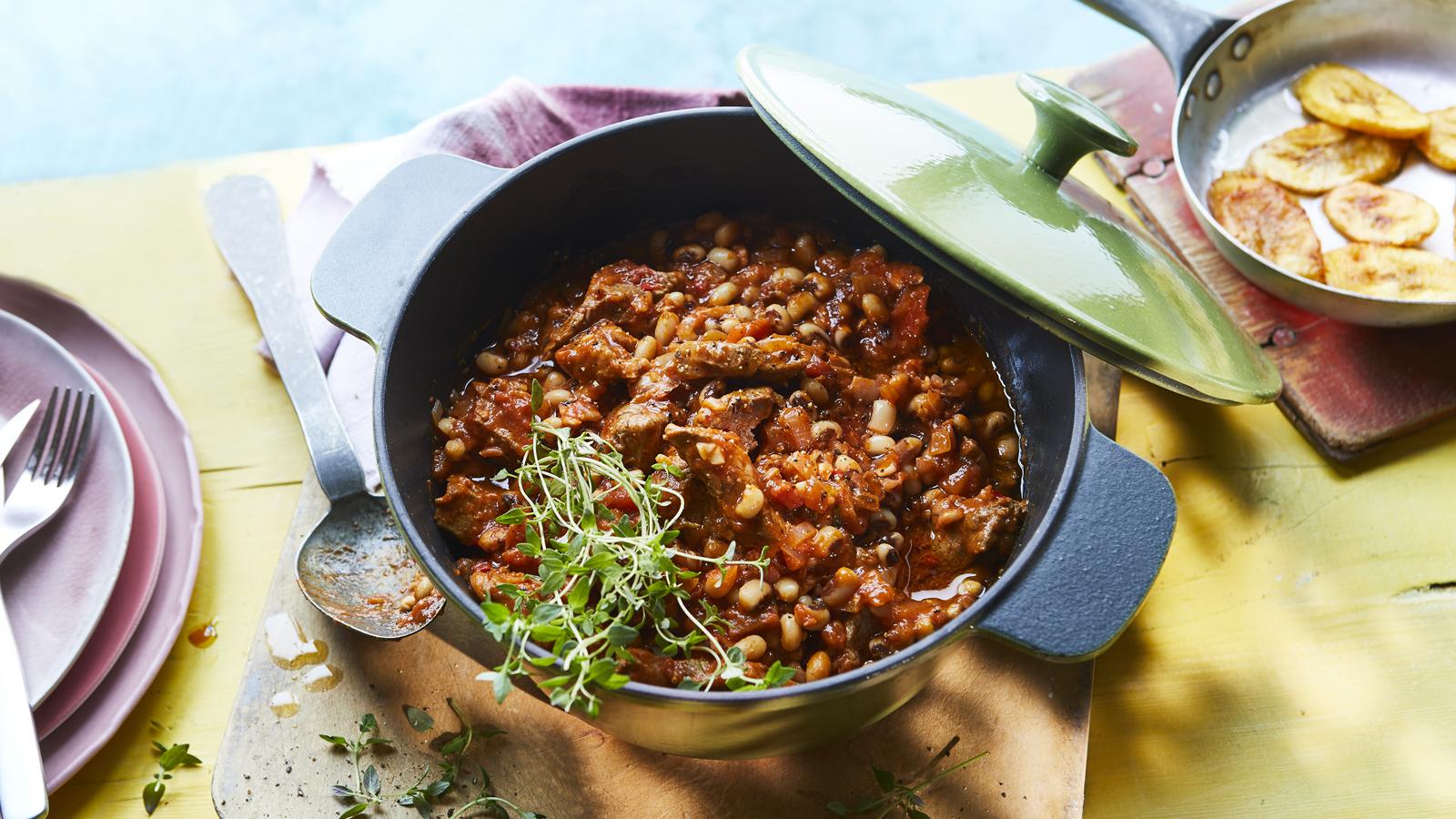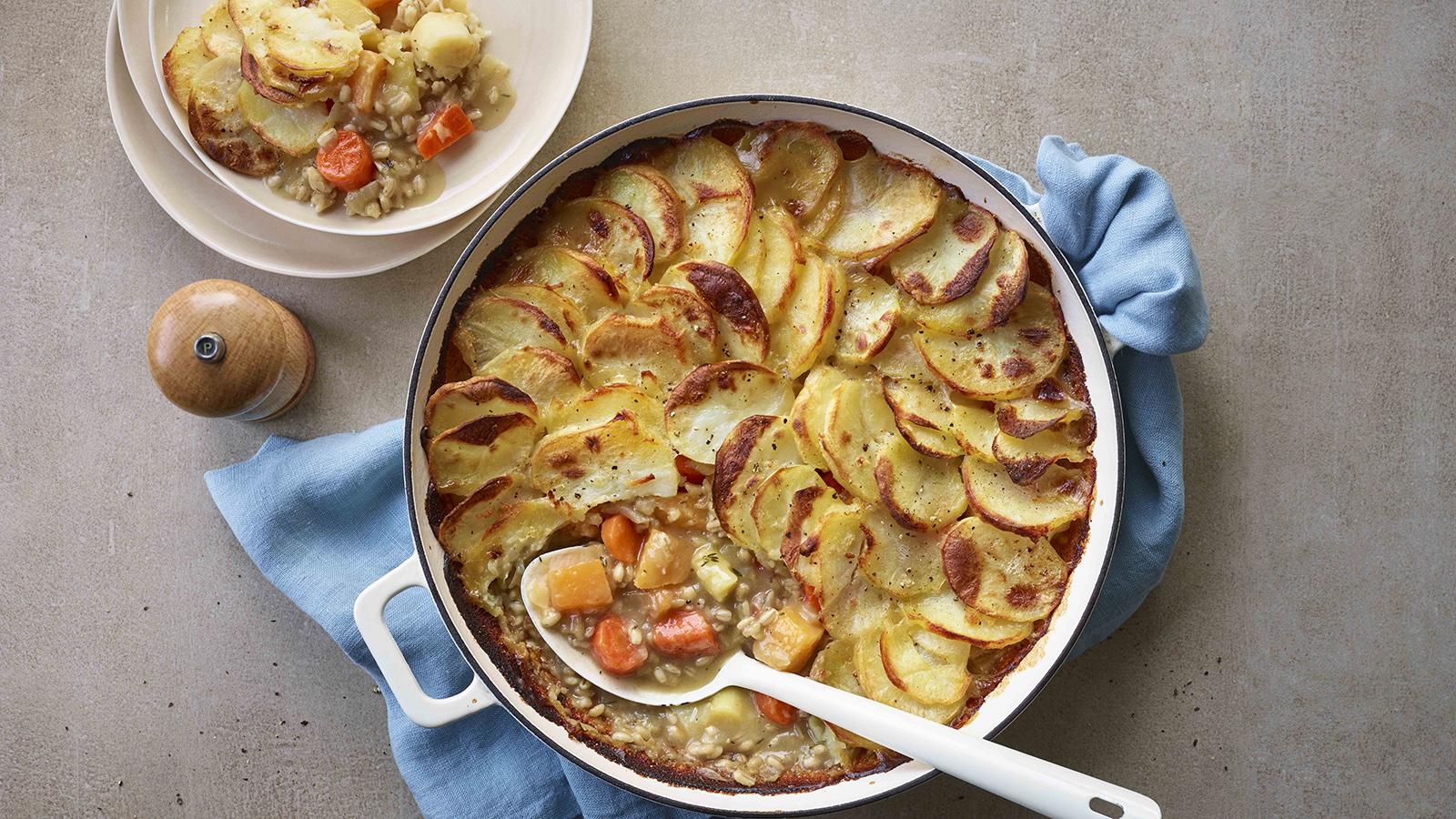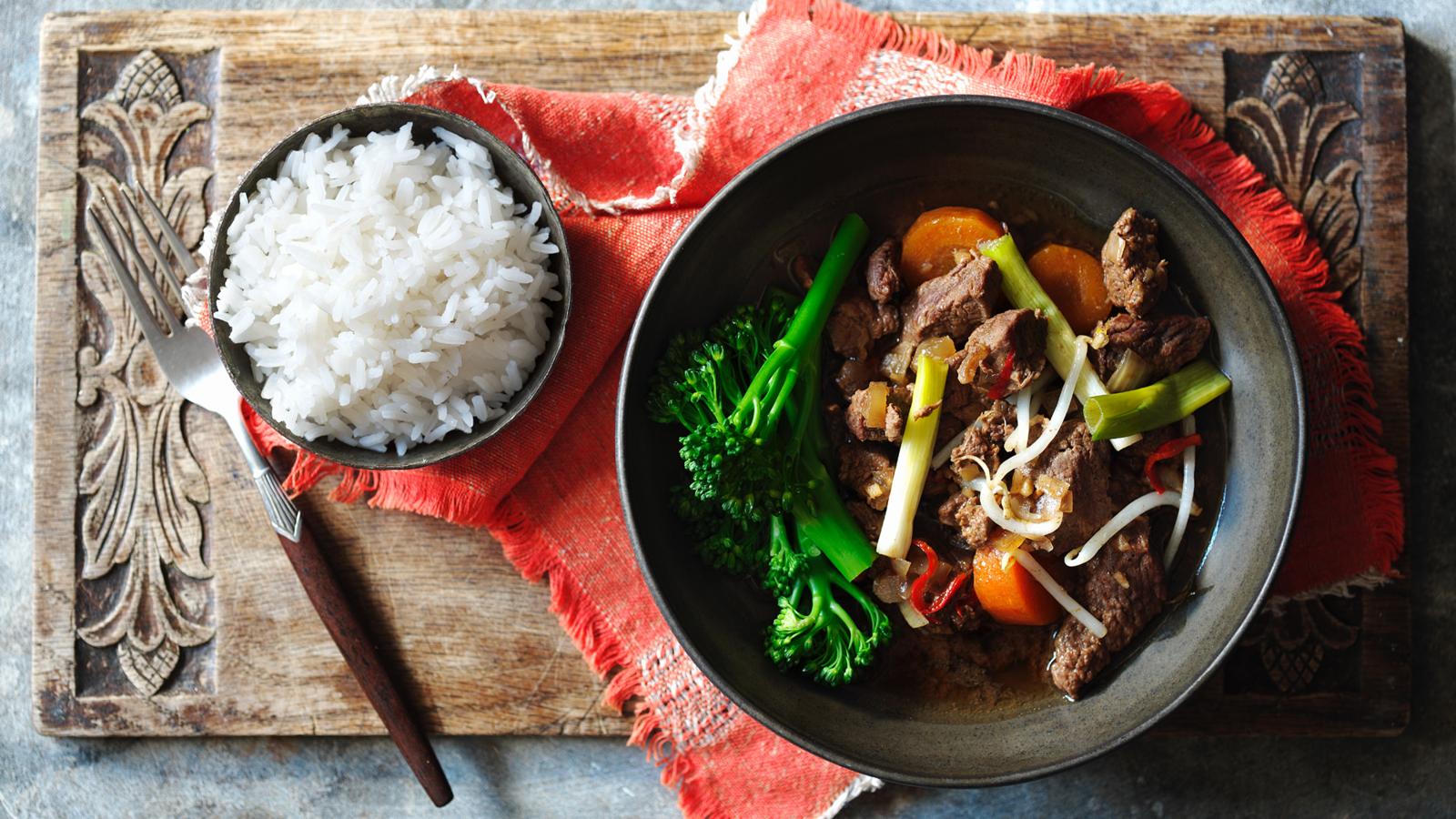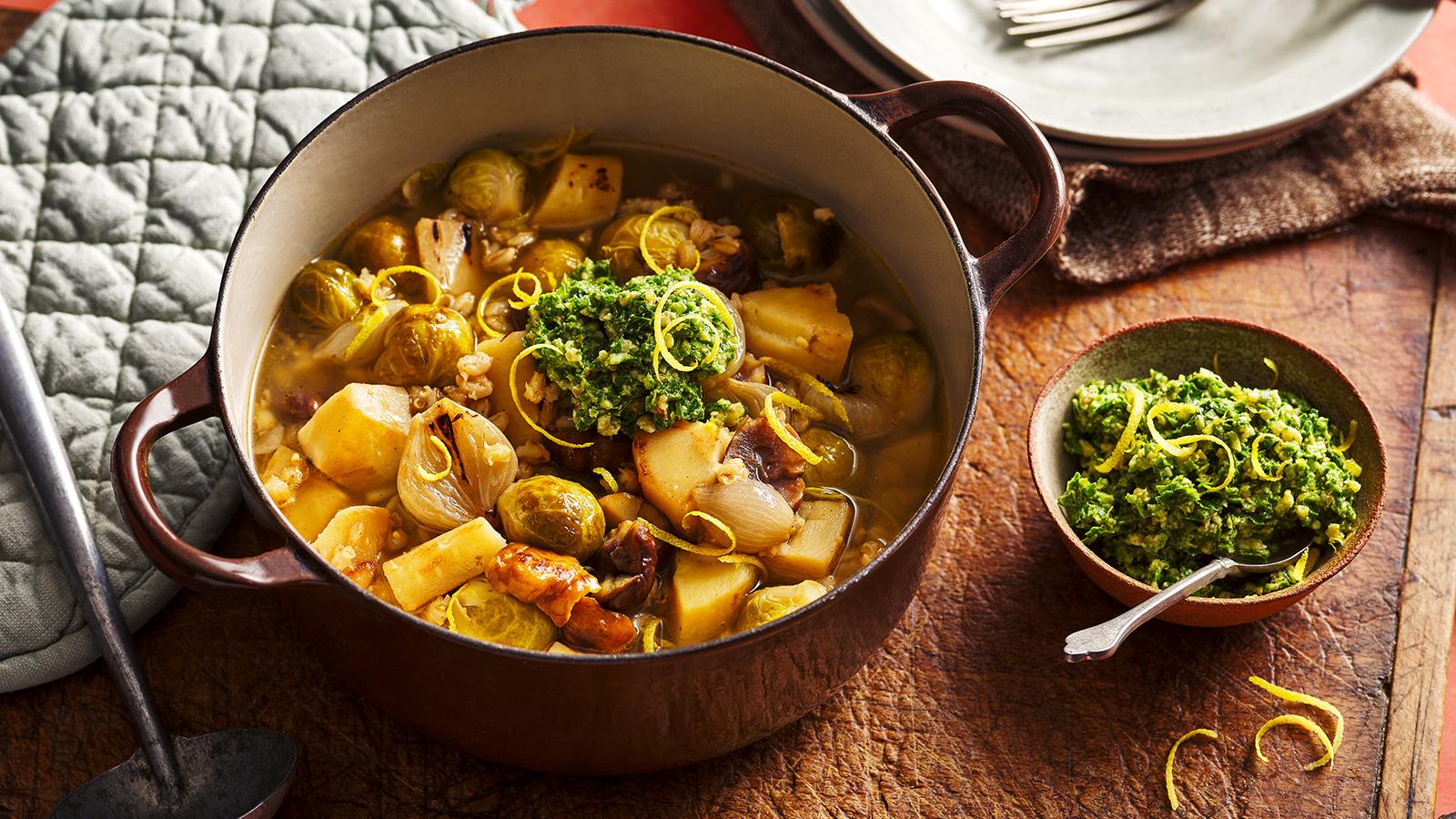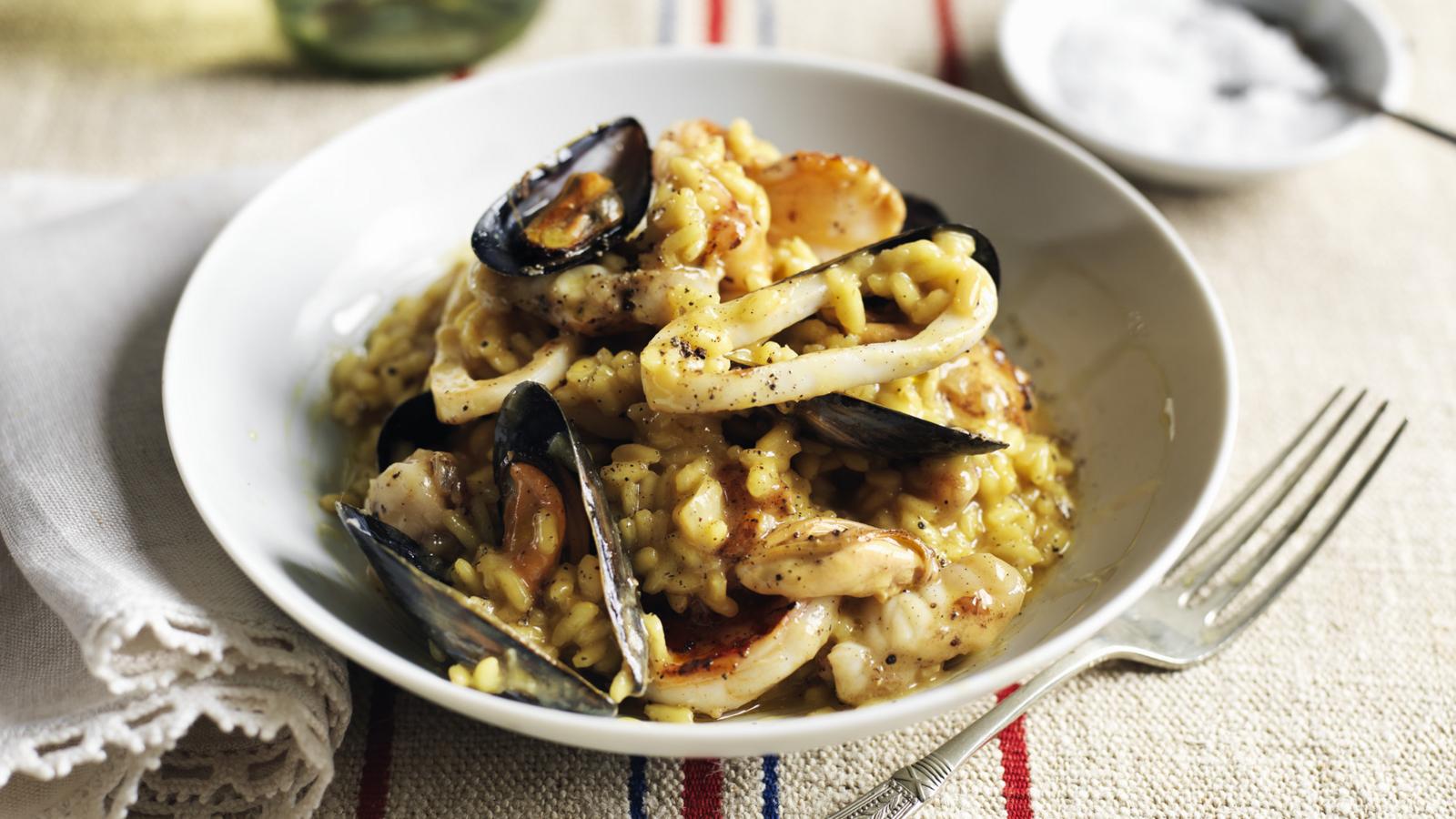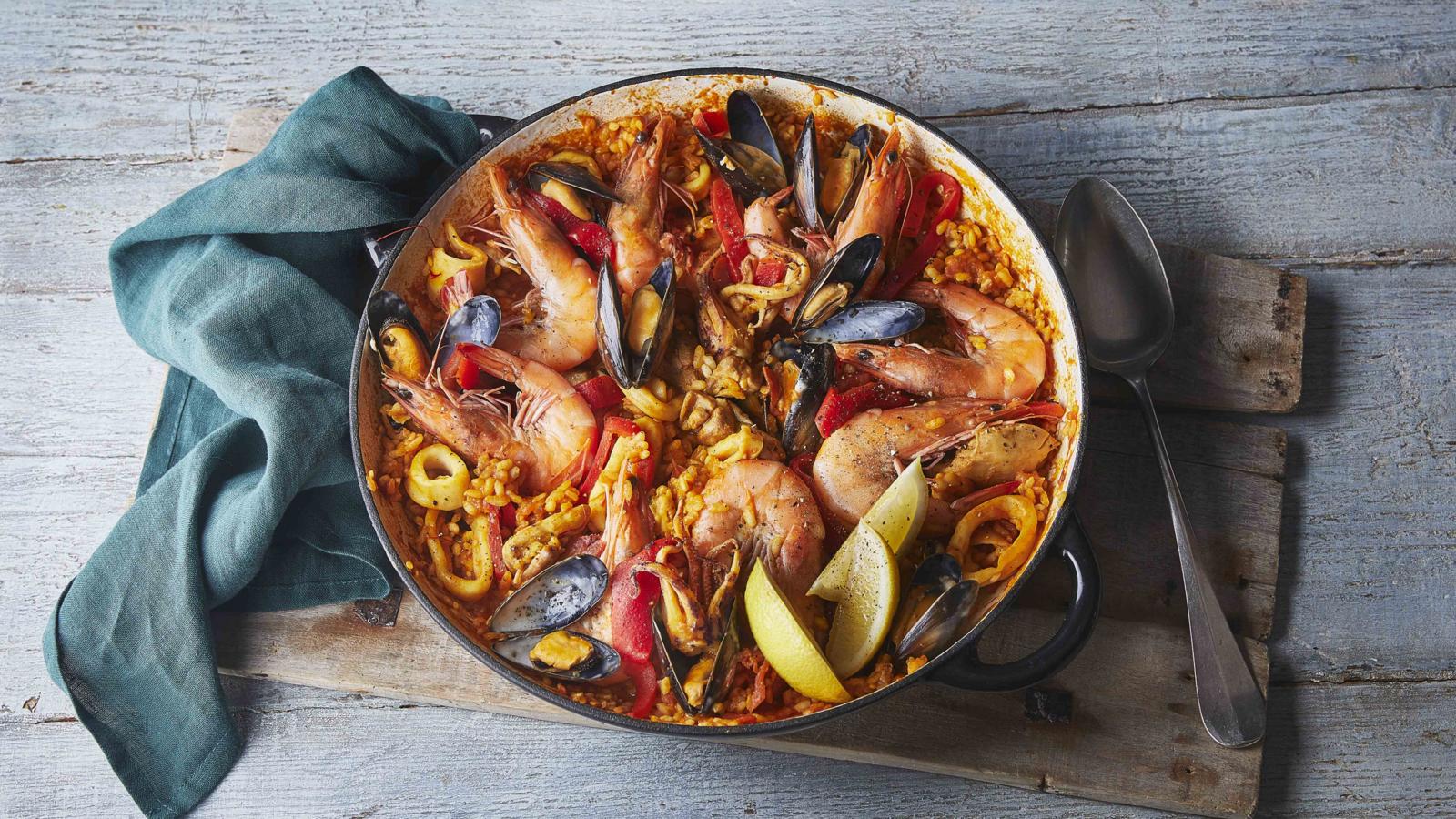Spicy Sichuan hotpot
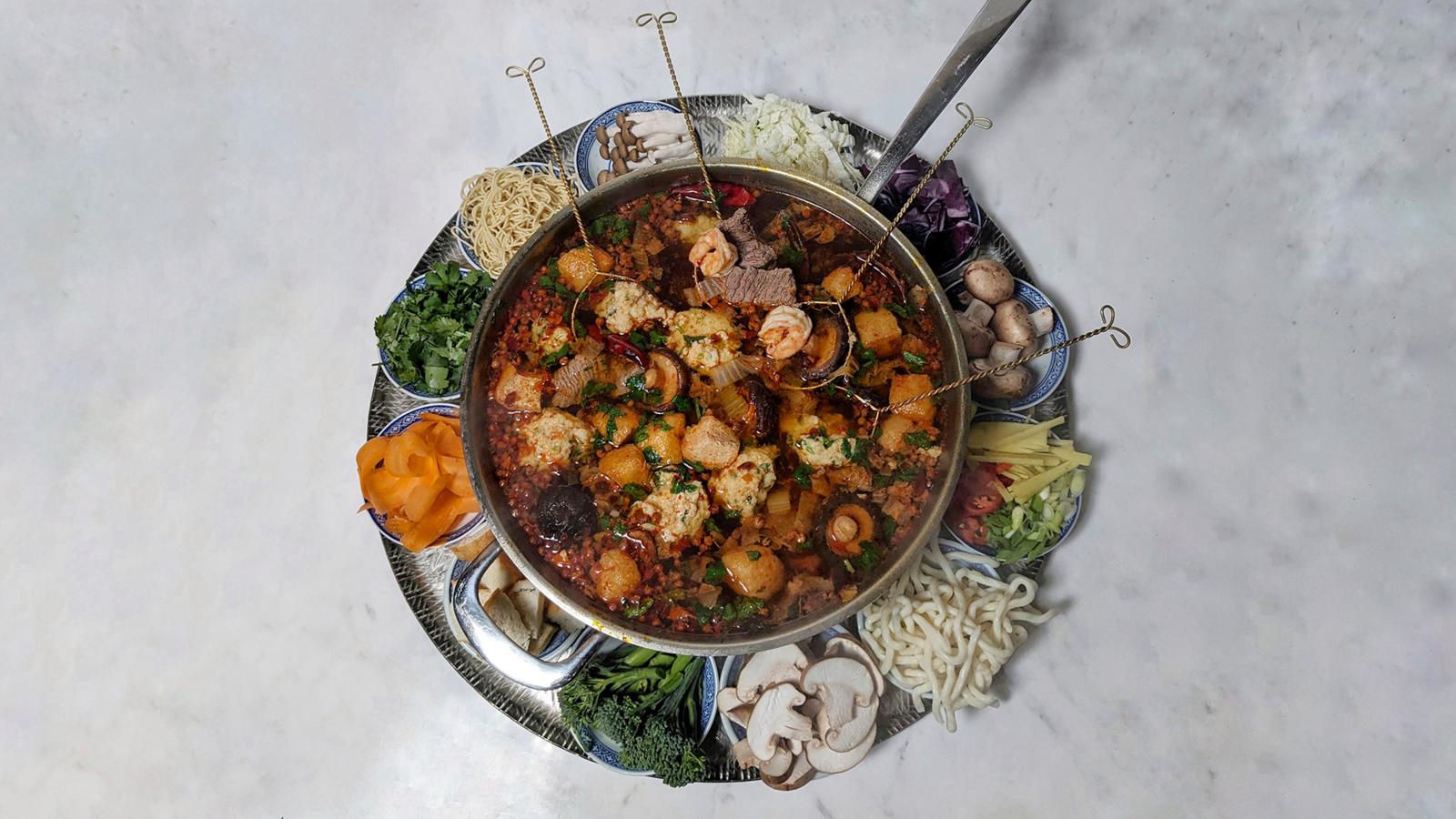
- Prepare
- less than 30 mins
- Cook
- 10 to 30 mins
- Serve
- Serves 4–6
- Dietary
- Dairy-free
This hotpot can be as simple or as lavish as you like – this version makes fish balls with squid and haddock but it can also be made vegan or vegetarian.
From Saturday Kitchen
Ingredients
For Ching’s special hotpot dipping sauce
- 1 garlic clove, finely chopped
- 1 red chilli, seeds removed and finely chopped
- 1 spring onion, trimmed and sliced into 5mm/¼in thick rounds
- 3 tbsp light soy sauce
- 4 tbsp mirin
- 3 tbsp rice vinegar
- 1 tbsp crispy chilli oil
- 1 tbsp smooth peanut butter
- 1 tbsp toasted sesame oil
- 1 tbsp white sesame seeds, toasted
- 1 tbsp finely chopped fresh coriander
For Ching’s traditional Taiwanese dipping sauce
- 1 free-range egg yolk (optional)
- 1 tbsp satay sauce
- 1 tbsp light soy sauce
- 1 tbsp finely chopped spring onion
- 1 tbsp finely chopped fresh coriander
For the fish balls
- 150g/5½oz squid, cleaned and roughly chopped
- 150g/5½oz haddock fillets, roughly chopped
- pinch sea salt
- pinch ground white pepper
- 1 tsp Shaoxing rice wine or dry sherry
- 1 tbsp cornflour
- 1 free-range egg white
- 1 tsp oyster sauce
- 1 tbsp finely chopped fresh coriander
For the base
- 2 tbsp groundnut oil
- 3–4 dried Sichuan chillies
- 30–50g/1–1¾oz whole Sichuan peppercorns
- 1 tbsp chilli bean sauce (or miso mixed with chilli sauce)
- 1 tbsp chilli sauce
- 2–2.5 litres/3½–4½ pints vegetable stock or chicken stock
- 6–8 large dried Chinese mushrooms
- 1 star anise
- 1 cinnamon stick
- small handful dried tangerine peel (optional)
- 100ml/3½fl oz chilli oil
- 5cm/2in fresh root ginger, peeled and sliced into rounds
- 2 red chillies, seeds removed and sliced
- 1 large carrot, peeled and sliced into 1cm/½in thick rounds
- 1 small Chinese cabbage, leaves separated and cut into bite-sized pieces
- small handful fried tofu, cut into 2.5cm/1in chunks
To serve (see Tip)
- assorted fresh mushrooms, such as oyster, shiitake, enoki or shimeji
- assorted raw seafood, such as seabass slices, cod slices, scallops or prawns
- assorted raw meats, such as rib-eye beef fillet slices or sirloin slices
- assorted tofu, such as fried, smoked, silken or bean curd knots
- assorted raw vegetables, such as Tenderstem broccoli, carrot curls or red cabbage
- assorted noodles, such as udon, egg or instant dried
- assorted aromatics, such as coriander, spring onions, garlic, ginger or chillies
Method
To make Ching’s special hotpot dipping sauce, mix all of the ingredients together in a bowl and set aside.
To make Ching’s traditional Taiwanese dipping sauce, mix all of the ingredients together in a bowl and set aside.
To make the fish balls, place the squid and haddock in a food processor. Add the salt, pepper, rice wine, cornflour, egg white and oyster sauce and blend until light and airy. Sprinkle over the coriander and mix well. Set aside.
To make the base, heat the groundnut oil in a 2.5 litre/4½ pints wok or cooking pot over a high heat.
Add the dried chillies and peppercorns and stir-fry until fragrant.
Add the chilli bean sauce and chilli sauce and fry for a few seconds to release the flavour and aroma.
Pour in the vegetable stock. Add the dried Chinese mushrooms, star anise, cinnamon stick, tangerine peel (if using), chilli oil and ginger and bring to the boil. Simmer for at least 10 minutes.
Meanwhile, prepare the plates of serving ingredients.
Add the carrot, Chinese cabbage and tofu to the soup base, alongside any of the other preferred raw ingredients, and heat until cooked.
Add the fish ball mixture in spoonfuls to the base and cook for 3–5 minutes. Once the fish balls float to the surface, they are cooked and ready to eat.
To serve, place the pot in the centre of the table. Place any leftover ingredients that can be eaten raw on the table alongside the dipping sauces.
Ladle the hotpot into bowls and add any preferred leftover ingredients. Dip the raw or poached ingredients into the dipping sauces. Eat immediately!
Recipe tips
The serving ingredients are the raw ingredients that can be added to the hotpot. You can add as much or as little as you like of each element – ideally one small plate of each food group (meat, fish, vegetables, etc) but it’s up to you. For vegans or vegetarians, just use assorted vegetables, tofu and noodles of your choice.
Any leftovers can be used in a noodle soup later.
Traditionally the raw ingredients are set out on a lazy susan in individual pots.
Cut the serving ingredients into similar-sized pieces where needed so they cook at a similar rate.
For non-spicy food lovers, use miso paste and fresh ginger for the hotpot soup base.
If the soup broth gets too low, top up with more vegetable stock.
